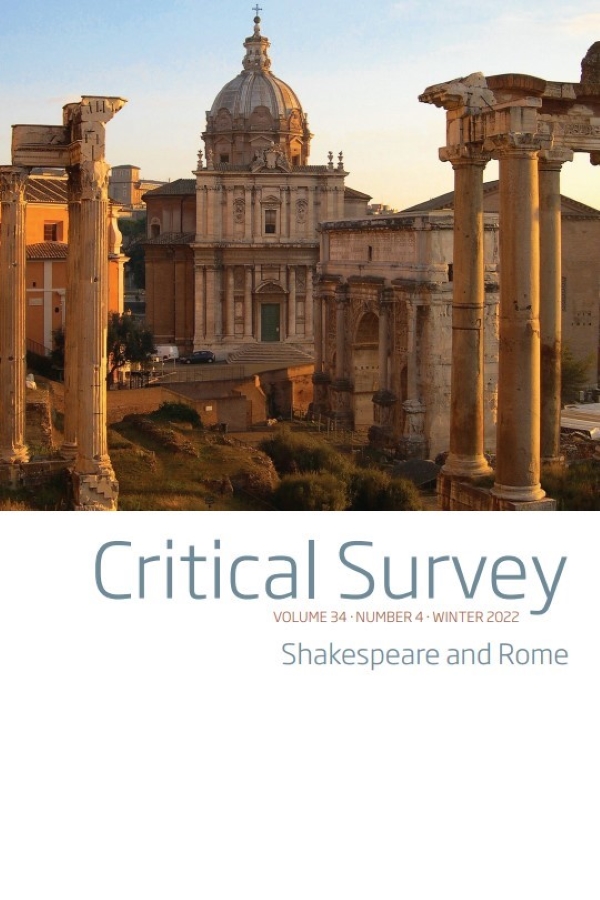
Critical Survey
ISSN: 0011-1570 (print) • ISSN: 1752-2293 (online) • 4 issues per year
Editor: Graham Holderness, University of Hertfordshire
Subjects: English-language Literature
![]() Available on JSTOR
Available on JSTOR
Latest Issue
Volume 37 Issue 3
Introduction
Shakespeare's Wars of the Roses
butcher They are all in order, and march toward us.
cade But then are we are in order when we are Most out of order.
When Richard III Met Long John Silver
Disabling ‘Great Man’ Theory in Robert Louis Stevenson's The Black Arrow
The article establishes that Stevenson cast his Richard III in the same mold as his iconic pirate Long John Silver, and that both characters acquired some of their menacing vitality from Stevenson's one-legged friend and collaborator William Ernest Henley. More broadly, Stevenson's historical novel presents a corrective to the top-down perspective of the Shakespearean history play or rather its conscription by Victorian ‘Great Man’ historiography.
Traumatography in Shakespeare's First Tetralogy
In his first tetralogy, Shakespeare presents a starkly pessimistic counterpoint to Thomas Nashes’ enthusiastic celebration of the early modern stage's renascence of chivalric ideals. Figures like Talbot – emblems of an older chivalric order – fade into irrelevance as their lofty self-conceptions clash with the cold pragmatism of a new political world: their outdated virtues are received with apathy by a rising generation of Machiavellian courtiers such as Richard III. As such, Shakespeare's portrayal of these older characters represents an irreparable disconnect between the medieval past and his own early modern present. England's defeat by France – a painful emblem of his time – is transformed from a straightforward military failure into a symptom of inexorable decline: Norbert Elias's “civilizing process”, framed as a moral unraveling rather than material progress. By sidestepping a blunt, mortifying reckoning with England's inadequacies against French power, Shakespeare's narrative becomes elusive and layered – less a chronicle of events than a haunting act of traumatography.
A Tragedy of Ethical Disorder
An Interpretation of Shakespeare's Richard III from the Perspective of Ethical Literary Criticism
Shakespeare's
Technology and Séance in Shakespeare's Early History Plays
In his first tetralogy, Shakespeare interrogates his age's faith in technological progress as a triumph of the rational over the superstitious. In
Death as Masquerade in William Shakespeare's Romeo and Juliet
‘As Good as a Chorus’ and ‘the Vulgars Element’
How the Audience and the Chorus Reciprocate in Hamlet
The weakening of the chorus destabilises its symbiotic, triadic nexus with action and audience. In
Timon of Athens and the Collapse of the Gift Economy
Ethics, Affect and Allegory in Shakespeare's Most Neglected Tragedy
This article is a reassessment of